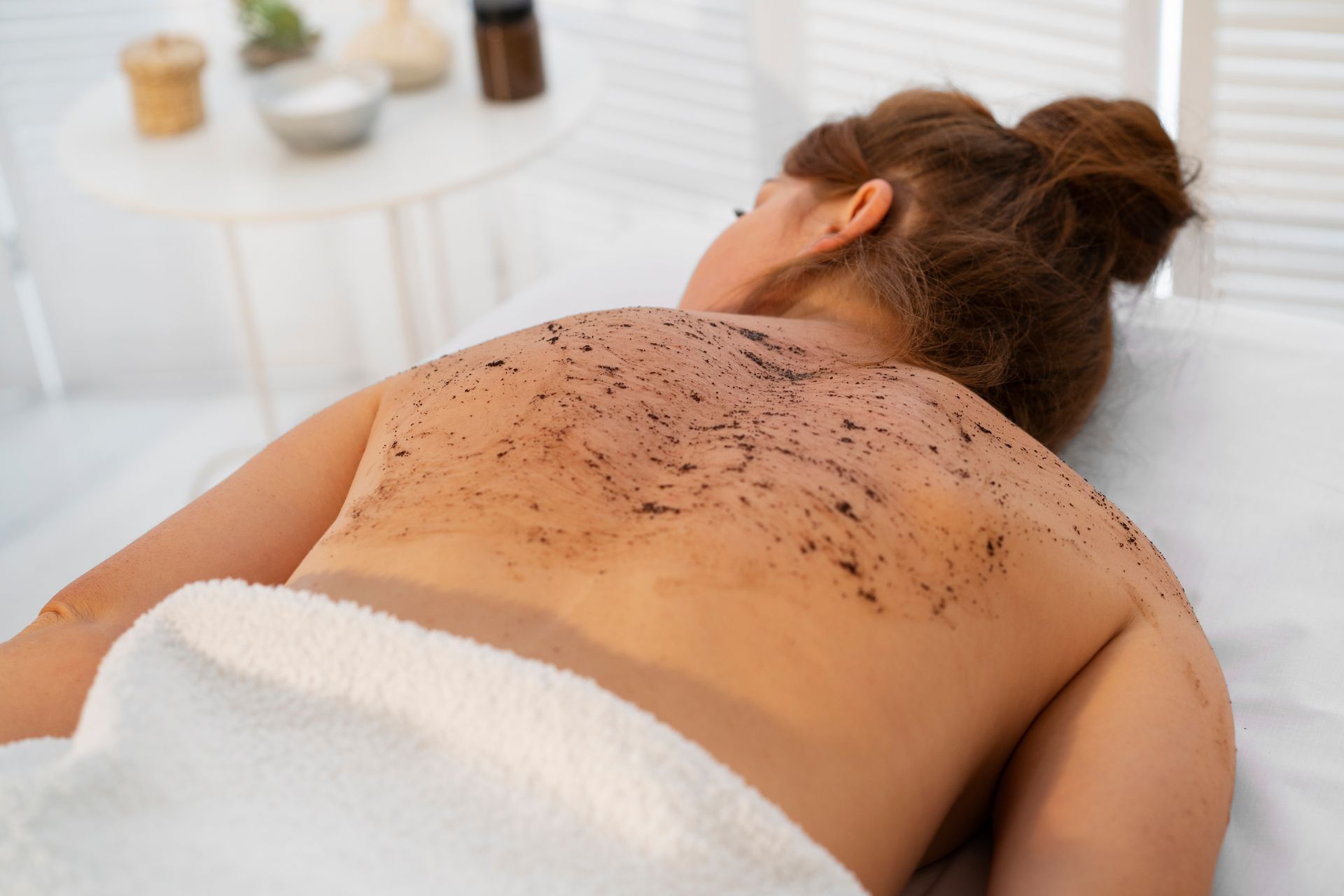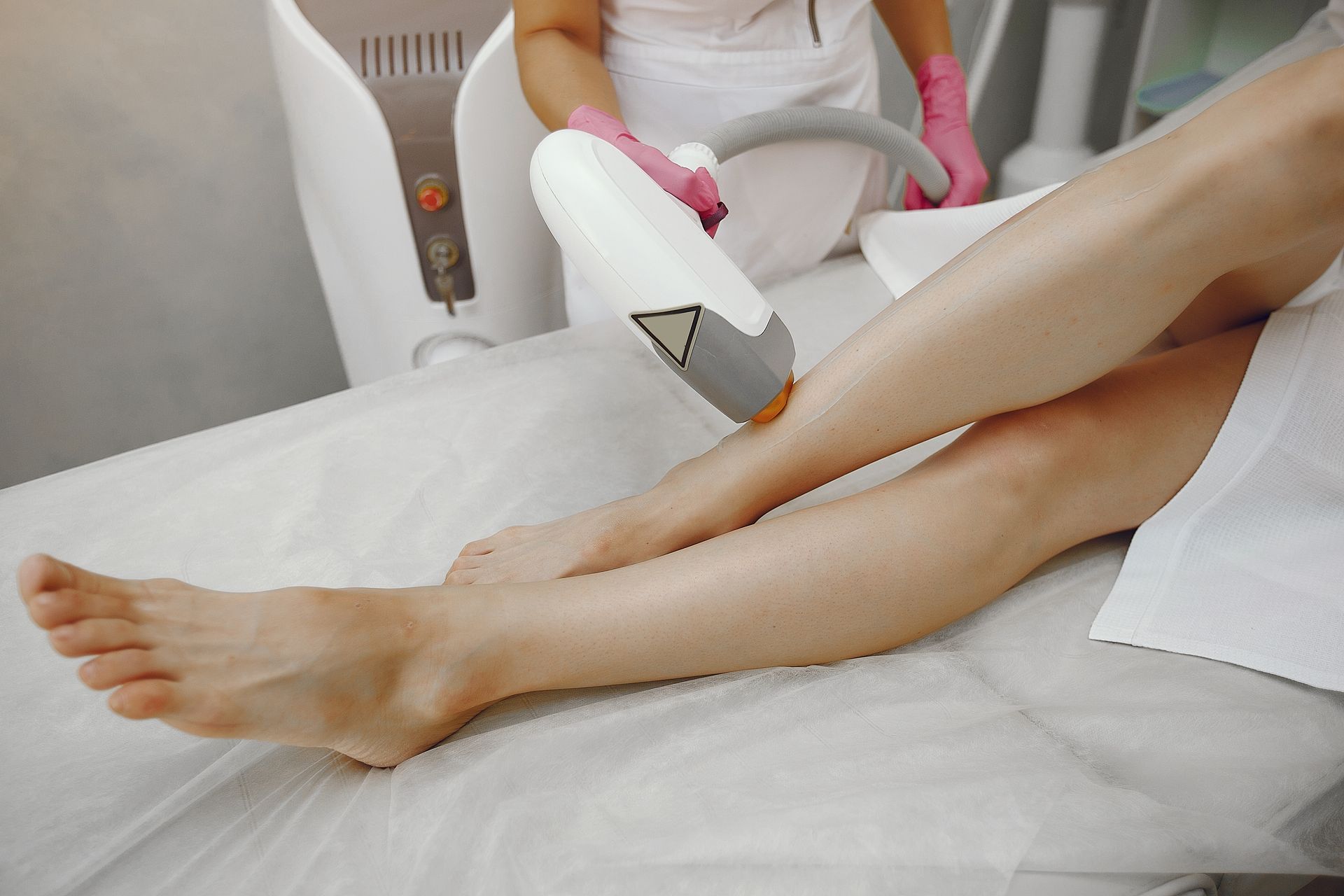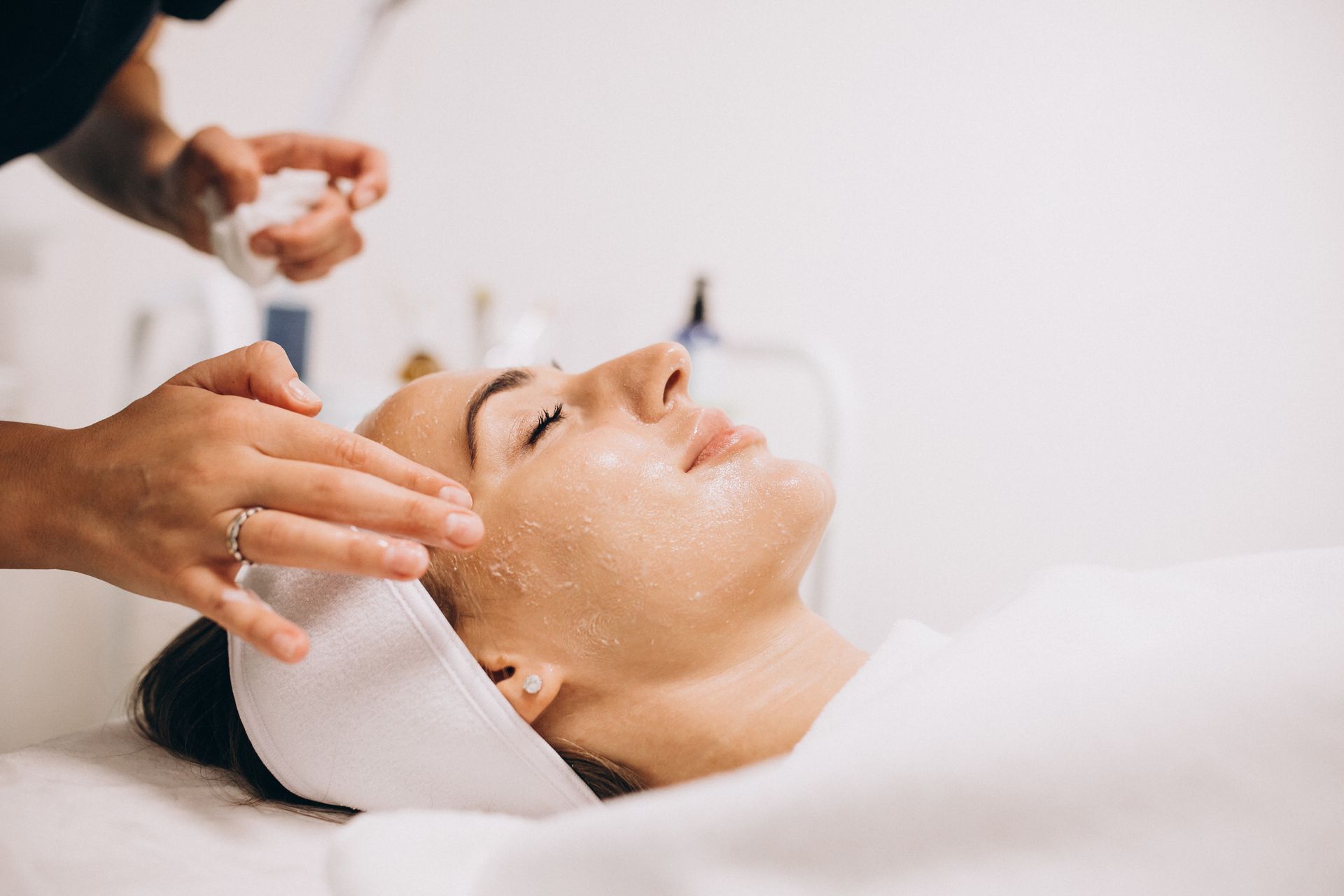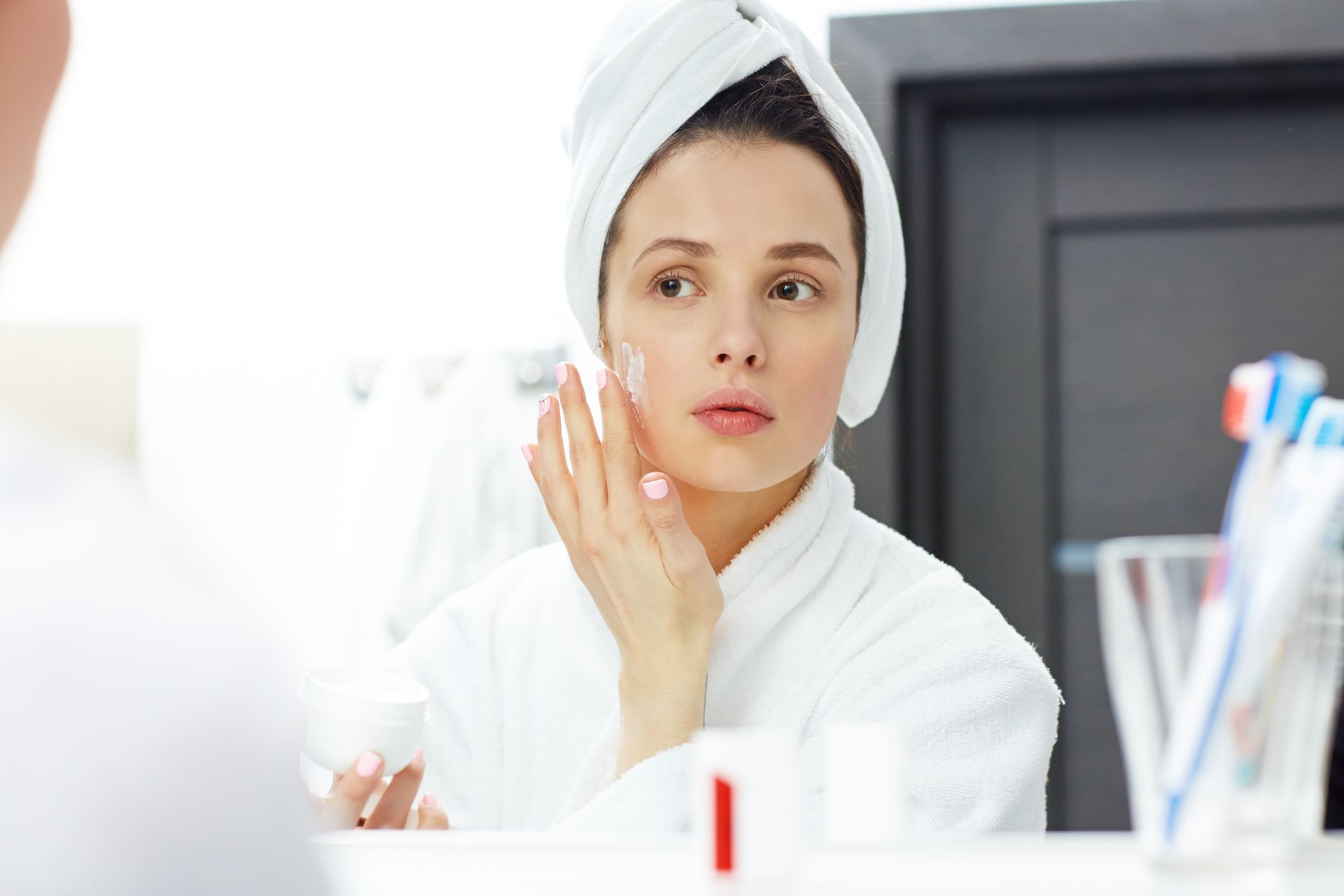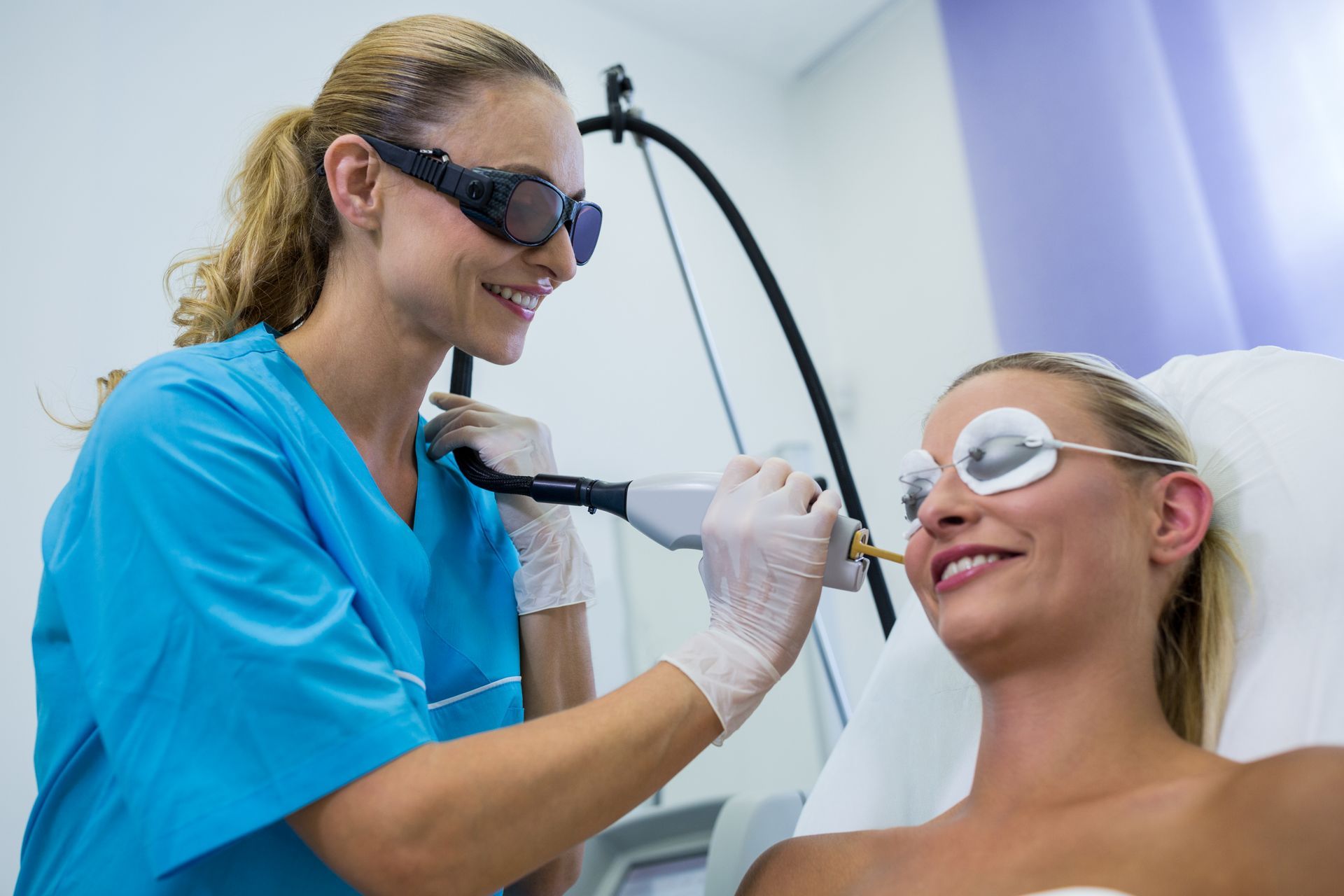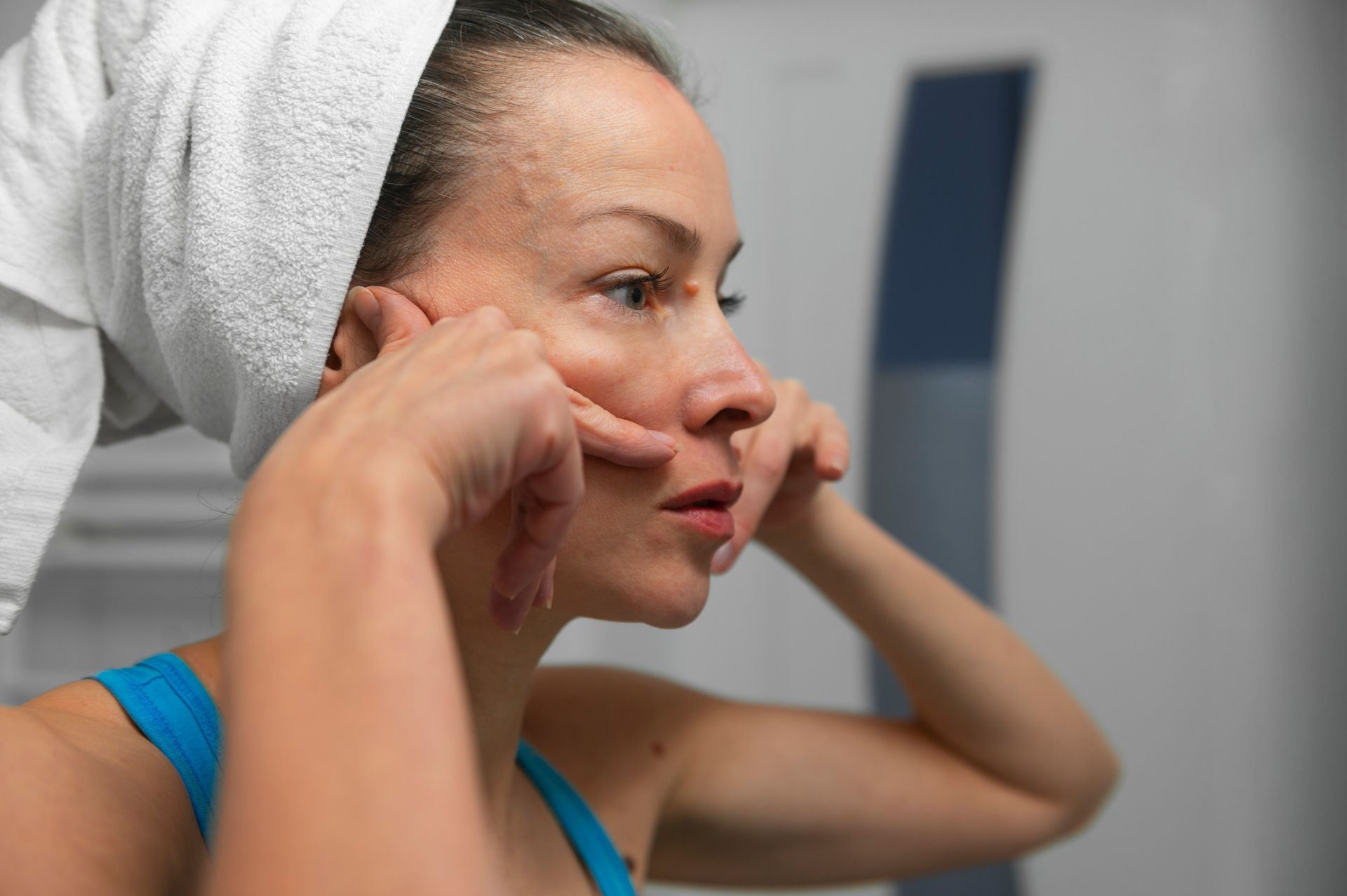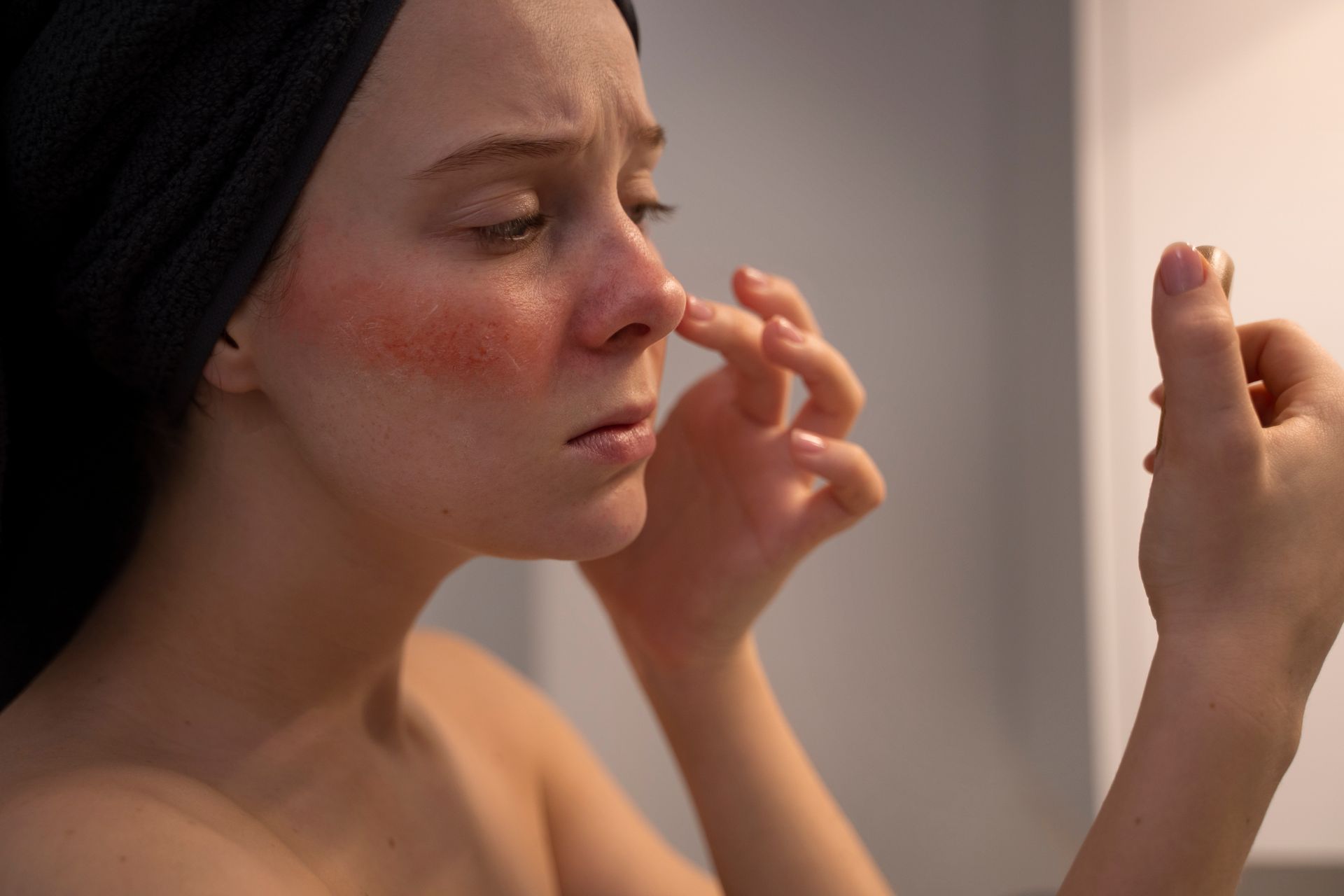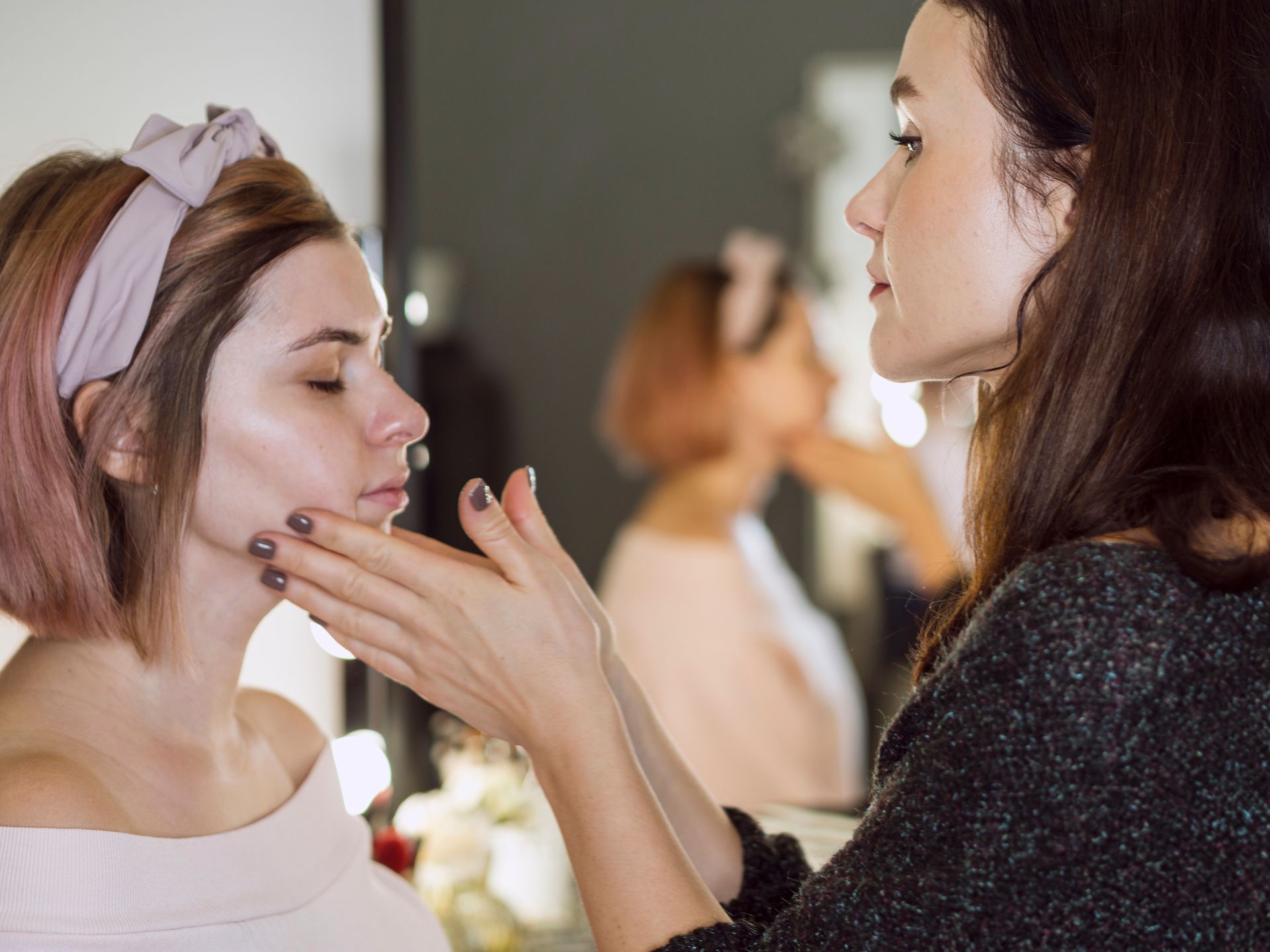Can You Resume Shaving After Laser Hair Removal?
Laser hair removal stands as a revolutionary solution for achieving long-term smoothness and freedom from unwanted hair. However, the journey toward silky, hair-free skin doesn't end with the final laser session. To maximize the benefits of laser hair removal and maintain the results, post-treatment care is crucial.
By comprehending the nuances of
post-laser hair removal care and following the recommended practices diligently, individuals pave the way toward smoother, hair-free skin while minimizing potential complications. It's within this phase that individuals often question the resumption of routine grooming habits, particularly the inquiry: "Can you resume shaving after laser hair removal?" Answering this question is fundamental to post-treatment care. It balances the desire for maintaining grooming habits with the need to safeguard and preserve the outcomes achieved through laser hair removal.
In this comprehensive guide, we'll delve into the intricacies surrounding the resumption of shaving after laser hair removal. We'll explore the significance of adhering to guidelines for post-treatment care, shedding light on the optimal approaches to ensure safety, efficacy, and the enduring success of laser hair removal treatments.
Shaving Guidelines Post-Laser Hair Removal
After undergoing laser hair removal treatment, patients often inquire about the appropriate time to resume shaving. Understanding the nuances and adhering to specific guidelines post-treatment are crucial to ensuring the safety, effectiveness, and longevity of the results achieved through laser hair removal.
Resumption of Shaving:
Determining the safe timing to resume shaving after laser hair removal varies based on individual responses to the treatment and the specific areas treated. In general, it's advisable to wait for the skin to recover from any immediate side effects, such as redness or sensitivity, before reintroducing shaving into your grooming routine. Professionals typically recommend refraining from shaving for a few days to a week post-treatment. This allows the skin to settle and reduces the risk of irritation or complications that may arise from shaving on sensitive or recently treated areas.
Professional Advice and Specific Instructions: Many clinics or practitioners provide personalized instructions for post-laser hair removal care, including guidance on when it's safe to resume shaving. These instructions often consider the type of laser used, the treated area, and individual skin characteristics. Specifically, professionals might recommend avoiding shaving until any visible signs of skin irritation or redness have subsided. They may also suggest using gentle skincare products and avoiding sun exposure or activities that could aggravate the treated area during this period.
Timeline for Resuming Shaving: The typical timeline for when it's safe to resume shaving after laser hair removal treatment generally ranges from a few days to a week. However, this can vary based on the
individual's skin sensitivity, the intensity of the treatment, and the area treated. Patients are advised to follow the recommendations provided by their laser treatment specialist or clinic regarding the exact timeline for resuming shaving. It's crucial to prioritize skin recovery and adhere to the prescribed post-treatment care regimen to ensure optimal results and minimize any potential adverse effects.
Individuals should wait the recommended period of time before resuming shaving after laser treatment to allow their skin to heal and adapt. This cautious approach supports the long-term success of the hair removal process and contributes to a smoother, more comfortable grooming experience.
Safety Measures for Resuming Shaving
Post-laser hair removal, resuming shaving demands a cautious approach to ensure both safety and the preservation of treatment results. Understanding and implementing specific safety measures before and during the shaving process is crucial to prevent potential skin reactions and maintain the skin's health.
Pre-Shaving Safety Precautions
Before resuming shaving post-laser hair removal, it's important to prioritize skin recovery. Seeking guidance from a laser treatment specialist or dermatologist is advisable if uncertainties arise regarding the appropriate timing for shaving or if unexpected skin reactions occur. Also, performing a small patch test in an inconspicuous area can serve as a precautionary measure, ensuring that the skin has sufficiently healed and can tolerate shaving without triggering adverse reactions. These precautions and consultations play a vital role in ensuring a safe and comfortable shaving experience after laser hair removal.
Understanding and Managing Potential Skin Reactions
Following laser hair removal, skin sensitivity or irritation may persist, necessitating cautious shaving practices. Opting for gentle shaving products and techniques becomes crucial to prevent aggravating these conditions during grooming routines. In instances where redness lingers, it's advisable to refrain from shaving until the skin has fully recovered. Instead, applying soothing skincare products, specifically recommended by professionals, can significantly alleviate any persistent inflammation. Prioritizing gentle approaches and allowing the skin ample time to recuperate ensures a more comfortable and effective shaving experience post-laser hair removal, fostering better skin health and recovery.
Emphasizing Gentle and Cautious Shaving Techniques
When shaving after laser hair removal, employing proper techniques is paramount for a smoother and irritation-free experience. Start by using a clean, sharp razor blade to minimize the risk of nicks or cuts, particularly in treated areas. Softening the skin beforehand, either with warm water or a gentle exfoliating product, readies the hair follicles, reducing the likelihood of irritation during shaving. Adopting gentle pressure and refraining from repetitive strokes over the same area help prevent unnecessary friction and subsequent skin irritation. Finally, post-shave moisturization with a gentle, hydrating lotion or cream is essential to soothe the skin and replenish lost moisture, ensuring a comfortable and well-maintained skin condition post-treatment.
Implementing these safety measures significantly reduces the risk of adverse reactions or complications when resuming shaving after laser hair removal. Prioritizing skin health, following professional advice, and employing gentle shaving practices contribute to a smoother, safer post-treatment grooming experience.
Effective Shaving Techniques Post-Treatment
Shaving after laser hair removal requires a delicate approach to maintain the achieved results and ensure skin health. Employing the right techniques, tools, and products is pivotal for a safe and efficient shaving experience.
Best Practices for Shaving:
- Opt for a clean, sharp razor with multiple blades to minimize skin irritation. Disposable razors or those with moisture strips can be gentle on the skin.
- Begin by softening the skin with warm water or a gentle exfoliating cleanser. This helps open the pores and soften the hair, making shaving easier and less irritating.
- Apply a quality shaving cream or gel to the area being shaved. Look for products designed for sensitive skin or those that contain soothing ingredients like aloe vera or chamomile.
- Light, gentle strokes should be used to shave in the direction of hair growth. Avoid applying too much pressure, as this can cause irritation or razor burns, especially on sensitive post-treated skin.
- It is important to rinse the razor blade frequently to remove shaving cream buildup and hair. This ensures a smoother shave and reduces the risk of clogging or dragging the razor across the skin.
- Once done, rinse the skin with cool water to close the pores and pat it dry gently. Apply a mild, fragrance-free moisturizer to soothe and hydrate the skin after shaving.
Suitable Shaving Tools and Products
- Look for razors with multiple blades and lubricating strips designed for sensitive skin. Avoid using dull blades as they can cause irritation and uneven shaving.
- Choose products specifically formulated for sensitive skin, free from harsh chemicals or fragrances that may cause irritation.
- Consider using post-shave lotions or gels containing ingredients like aloe vera or chamomile to calm and moisturize the skin.
Adapting Shaving Techniques for Sensitive Skin
- When shaving sensitive areas or recently treated skin, apply minimal pressure to the razor. Gentle, light strokes help prevent irritation and discomfort.
- Refrain from repetitive strokes over the same area to minimize irritation. Shave only as much as necessary to avoid overworking the skin.
By employing these effective shaving techniques, utilizing suitable tools and products, and adapting shaving methods for sensitive skin, individuals can navigate post-laser hair removal grooming with minimal irritation or complications, ensuring a smoother and safer shaving experience.
Managing Skin Sensitivity Post-Laser Hair Removal
After undergoing laser hair removal treatment, it's common for the skin to experience temporary sensitivity or reactions. In order to improve comfort and promote healing of the skin, it is important to learn how to alleviate these reactions and implement a soothing skincare routine.
Common Skin Reactions and Alleviating Them
Redness and Irritation: Post-treatment, the skin might exhibit redness or mild irritation. To alleviate these symptoms, consider applying a cold compress or using a gentle, fragrance-free moisturizer to soothe the affected area.
Slight Swelling or Tingling: Some individuals might experience slight swelling or tingling sensations. Applying aloe vera gel or a gentle hydrocortisone cream can provide relief from these sensations.
Minor Discomfort or Itching: If experiencing minor discomfort or itching, avoid scratching the area. Instead, opt for fragrance-free, hypoallergenic moisturizers to keep the skin hydrated and alleviate itching.
Skincare Routines to Soothe Sensitive Skin
Gentle Cleansing: Cleanse the treated area with a mild, non-abrasive cleanser. Avoid harsh exfoliants or scrubs that could further irritate sensitive skin.
Moisturization: Keep the skin well-hydrated with fragrance-free, hypoallergenic moisturizers. Look for products containing ingredients like hyaluronic acid or ceramides, known for their soothing properties.
Sun Protection: Shield the treated area from direct sunlight by wearing loose clothing or using sun-protective clothing. Apply a broad-spectrum sunscreen with SPF 30 or higher to prevent sun damage to the sensitive skin post-treatment.
Balancing Shaving and Laser Hair Removal Results
Shaving, a common grooming practice, often prompts queries about its impact on the efficacy and longevity of laser hair removal treatment. Maintaining a balance between shaving and treatment outcomes is essential for optimizing treatment outcomes.
Shaving primarily addresses hair at the surface level, cutting it off at the skin's surface without impacting the hair follicles themselves. This stands in contrast to laser hair removal, which focuses on targeting the hair follicles beneath the skin to impede their growth over time. Importantly, shaving doesn't disturb the hair follicles treated during laser sessions. It doesn't hinder the follicles' ability to respond to subsequent laser treatments nor does it compromise the overall efficacy of the procedure. While shaving manages surface hair, laser hair removal continues to address hair growth at its root, ensuring a complementary approach without compromising the treatment's effectiveness.
Clarifying Efficacy and Longevity of Treatment
The effectiveness of laser hair removal remains unaffected even if individuals shave between treatment sessions. Shaving doesn't undermine the advancements made during laser treatments since the procedure predominantly focuses on affecting hair follicles rather than the surface hair itself. Consistent laser hair removal sessions lead to a gradual reduction in hair growth over time. While shaving between treatments doesn't compromise the long-term reduction in hair density or growth achieved through laser sessions, it may be necessary to manage surface hair more frequently. This balance ensures both the efficacy of laser hair removal and the management of surface hair, contributing to smoother, longer-lasting results without impeding the overall progress of the treatment.
Maintaining Balance Between Shaving and Treatment Outcomes
Staying committed to the prescribed schedule for laser hair removal sessions is pivotal in achieving optimal and enduring results. It's essential to adhere to the specialist's recommendations and attend the sessions as advised to facilitate effective and lasting reduction of hair growth. Managing surface hair between treatments through regular shaving proves to be an effective method, ensuring a smooth appearance while allowing the laser to precisely target hair follicles during subsequent sessions. Importantly, refraining from alternative hair removal methods such as waxing, plucking, or depilatory creams between laser sessions is crucial. These methods disrupt the targeted hair growth cycle, potentially compromising the efficacy of laser treatments. Thus, maintaining consistency in the treatment schedule and relying on shaving for surface hair management while avoiding other hair removal techniques contribute significantly to the success and efficiency of laser hair removal procedures.
Conclusion
The post-laser hair removal journey encompasses careful consideration of shaving practices to ensure optimal results and skin health. By adhering to safe and gentle shaving techniques, managing post-treatment skin sensitivity effectively, and understanding the complementary role of shaving in between laser sessions, individuals can strike a balance that maintains treatment efficacy. Seeking professional advice for personalized guidance further enhances the post-treatment experience, allowing individuals to navigate shaving after laser hair removal confidently for smoother, long-lasting results and a more comfortable grooming routine.
BOOK YOUR FREE SESSION
